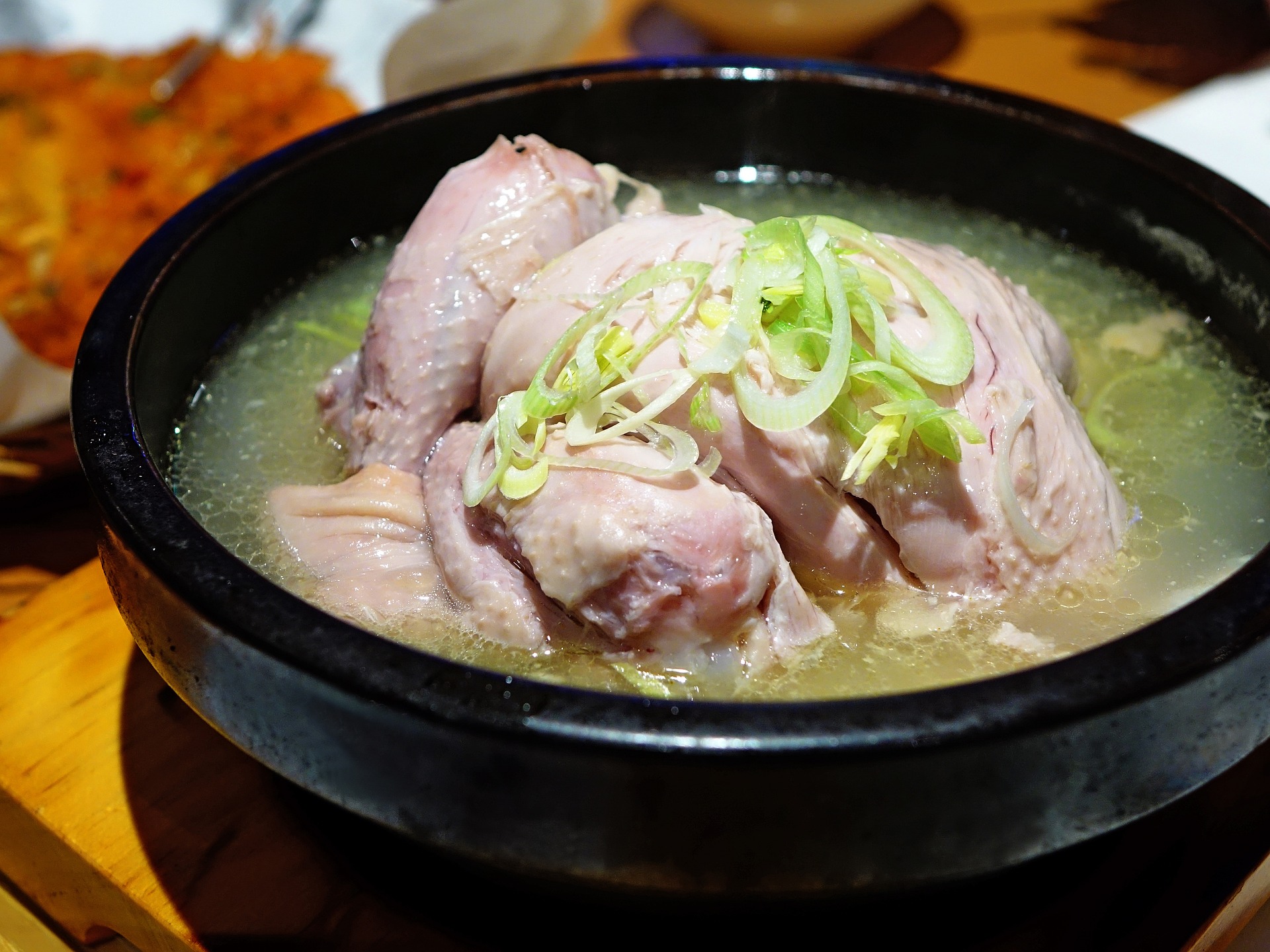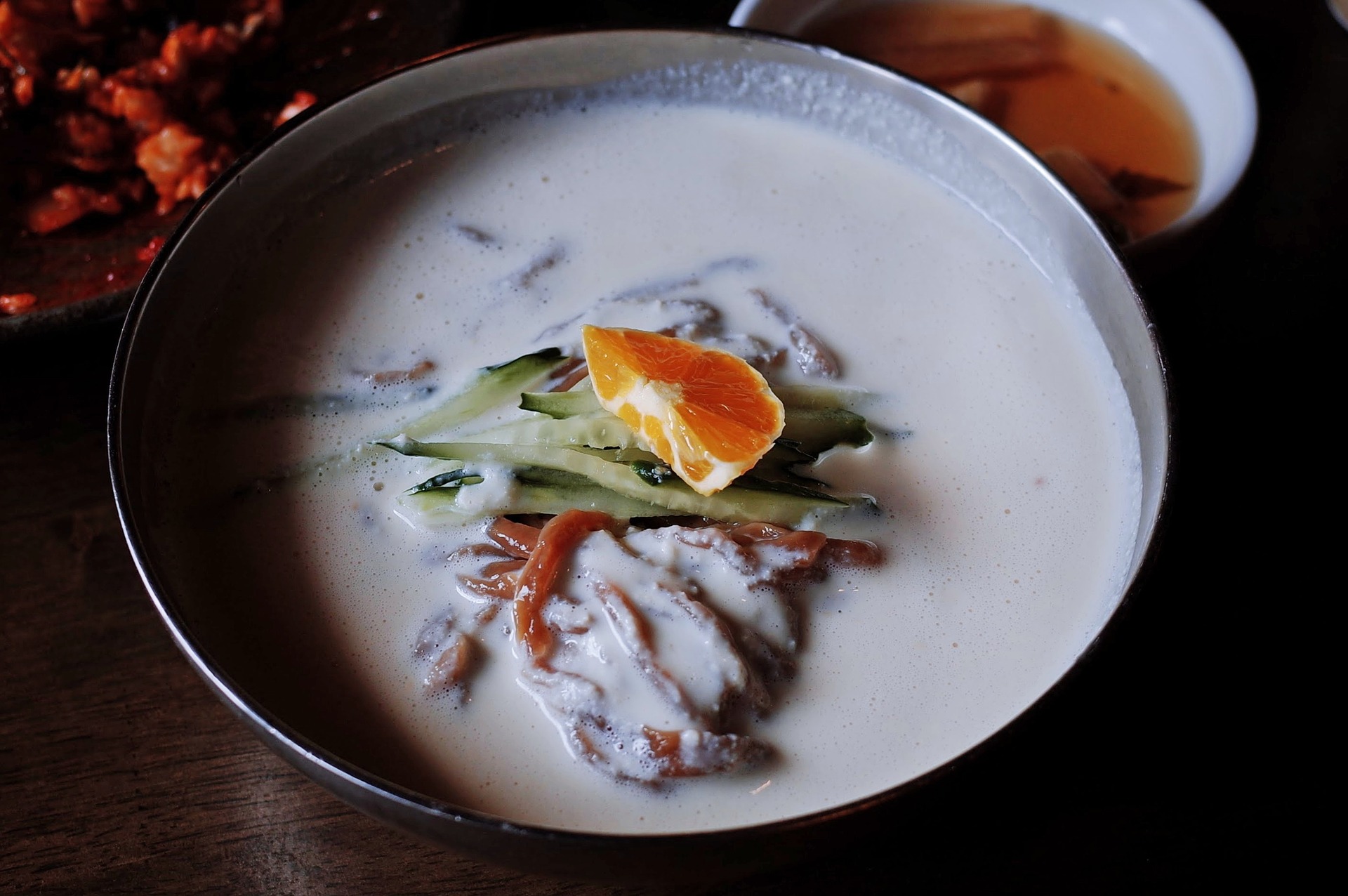Korean Summer Delicacies I Miss the Most (part 2) Posted by Flying Oyster on Aug 27, 2019 in Uncategorized
As I promised you from part 1, I am going to share two more Korean 여름 (yeu-rum: summer) 별미 (byul-mee) with a 재미있는 (jae-mee-it-nun: funny) story. Although I need to give you a small lesson about 이열치열 (ee-yul-chi-yul: fight fire with fire or like cures like. ) before I introduce you the first delicacy.
이열치열 is a 한자성어 (han-ja-seong-uh: a Korean idiom phrase which usually comprised of 4 Chinese characters.) 한자 (han-ja: Chinese characters) are used frequently in Korean language as French or Greek are often used in English. 한자성어 are used to describe situations or feelings. They can be a precise and simple tool to embellish whatever is being said.
The meaning of 이열치열 is that you fight summer heat by intentionally sweating more than you would wish to. It is rather a last resort to overcome extreme summer heat after you try everything. Sweating is supposed to lower your body temperature and eliminate toxins. I know it probably doesn’t make a sense to some of you. You are not alone. My husband still doesn’t understand this concept, and this is why I need to tell you the story to make you laugh.
Just to give you more details, my husband hates feeling hot more than anybody I know. His body feels too warm, like a simmering pot, especially in summer. I never have enjoyed cooking, nor have I ever cooked 삼계탕 (sam-gye-tang: a chicken soup cooked with ginseng, garlic, rice and jujube) before.
I would have definitely gone to a 식당 (sik-dang: a restaurant) to make this experience easy for everyone, but I had this brilliant idea. I wanted to cook a hot boiling chicken soup at home on a sweltering summer day to show my boyfriend how domestic I could be when we started dating in Korea.
When he got back from work, the first impression on his face was far from what I expected. He was not that excited once he felt the hot humid air emanating from cooking hot soup in a tiny apartment. He looked utterly puzzled why I cooked hot soup when it was above 90 degrees outside. He had absolutely no idea about eating 삼계탕 on the hottest day in summer as a Korean tradition. He eventually got irritated by feeling like being trapped in a sauna. I got mad at him because of his reaction. I didn’t know how much he hated feeling hot back then. I just thought he didn’t appreciate my effort.
Since then, we made a silent agreement that I don’t cook at home, which has worked out fine for me. We simply enjoy 삼계탕 together in a 식당 which is fully airconditioned. Nonetheless, he gets drenched eating hot chicken soup. Here is the famous Korean dish I want you to try.
3. 삼계탕 (sam-gye-tang: a chicken soup cooked with ginseng, garlic, rice and jujube)
Summer in Korea usually starts around June and lasts until August. It is hot and humid, but it seems to be getting worse every year whenever I go back to Korea. Traditionally, Koreans enjoy this boiling hot chicken soup at least three times during the summer for 몸보신 (mom-boh-shin: eating nutritious food to invigorate the body from the physical exhaustion, especially from heat exhaustion.) These three dates divide the summer as 초복 (cho-bok: the first part of the summer, which is usually around the middle of July), 중복 (joong-bok: the second part of the summer, which is usually around the end of July) and 말복 (mal-bok: the third part of the summer, which is usually around the middle of August). These dates can be changed every year since they rely on a lunar calendar. You don’t need to eat 삼계탕 on these exact dates. 삼계탕 is a popular menu item all around the year in Korea because it is delicious soul food.
4. 콩국수 ( kong- gook-soo: a cold noodle dish with soy milk)
This is one of the few dishes I can make well at home. I used to make this dish since I was a teenager only because I love the flavor. You will find that 콩국수 served at restaurants using traditional recipes, which takes more time and effort. I take a short cut. All you need is 7 재료 (jae-ryo: ingredients) with my recipe. You need 얼음 (ul-eum: ice), a half block of 두부 (doo-boo: Tofu), two cups of whole 우유 (woo-you: milk), 소금 (so-gum: salt), 오이 (oh-ee: cucumber), 계란 (gye-rhan: egg) and 소면 (so-myeon: thin wheat flour noodles).
First, dump a half block 두부 and two cups of whole 우유 with 얼음 into a blender to make soy milk broth for the noodle. Boil water in a pot. Cook 100 grams of thin wheat flour noodles for 3-4 minutes. Drain the hot water and rinse noodles with cold water. Let the noodles sit with ice for 3- 5 minutes to prevent them from getting mushy. At the same time, boil an egg for 7-9 minutes. Julienne some 오이 and cut a boiled egg into a half. 오이 and a half boiled egg sitting on top of 소면 as a garnish. You add 소금 as you taste depending on your preference.
Some might not like this dish because the flavor can be too plain, but the secret of this dish is the 고소한 맛 (go-so-han-mat: roasting nutty flavor) from soybeans, which I substitute for a half block of 두부.
As I am writing this, I truly want to visit Korea soon to taste Korean summer delicacies. Good food always makes my soul complete. What do you think about Korean summer delicacies? I would love to hear from you.

Build vocabulary, practice pronunciation, and more with Transparent Language Online. Available anytime, anywhere, on any device.








Comments:
Nteboheleng:
Summer in Korea sounds amazing and fun thank you for sharing!!! i want to go too someday ??
FlyHighOyster:
@Nteboheleng Thank you, Nteboheleng. I hope you visit Korea sometime soon!